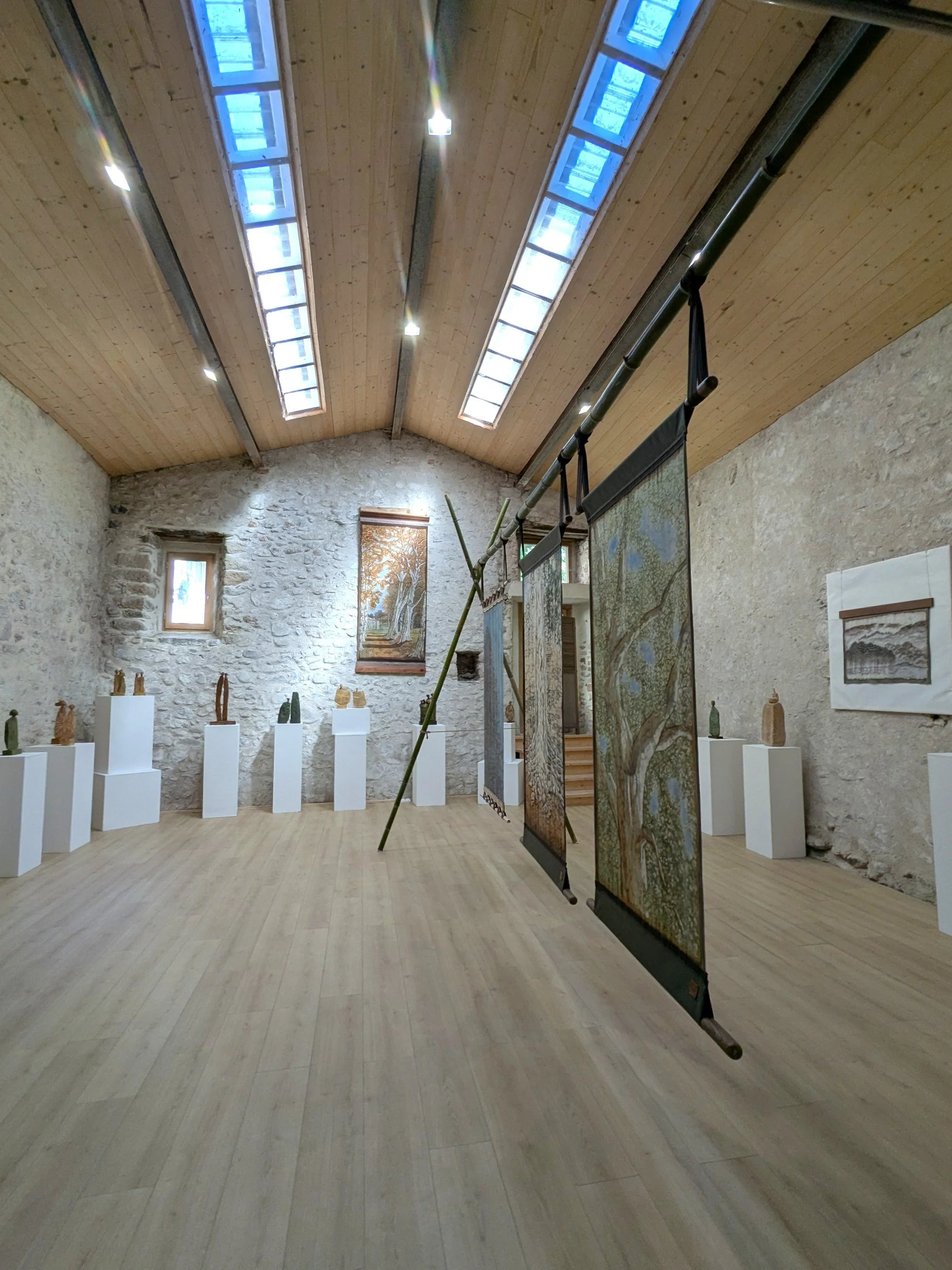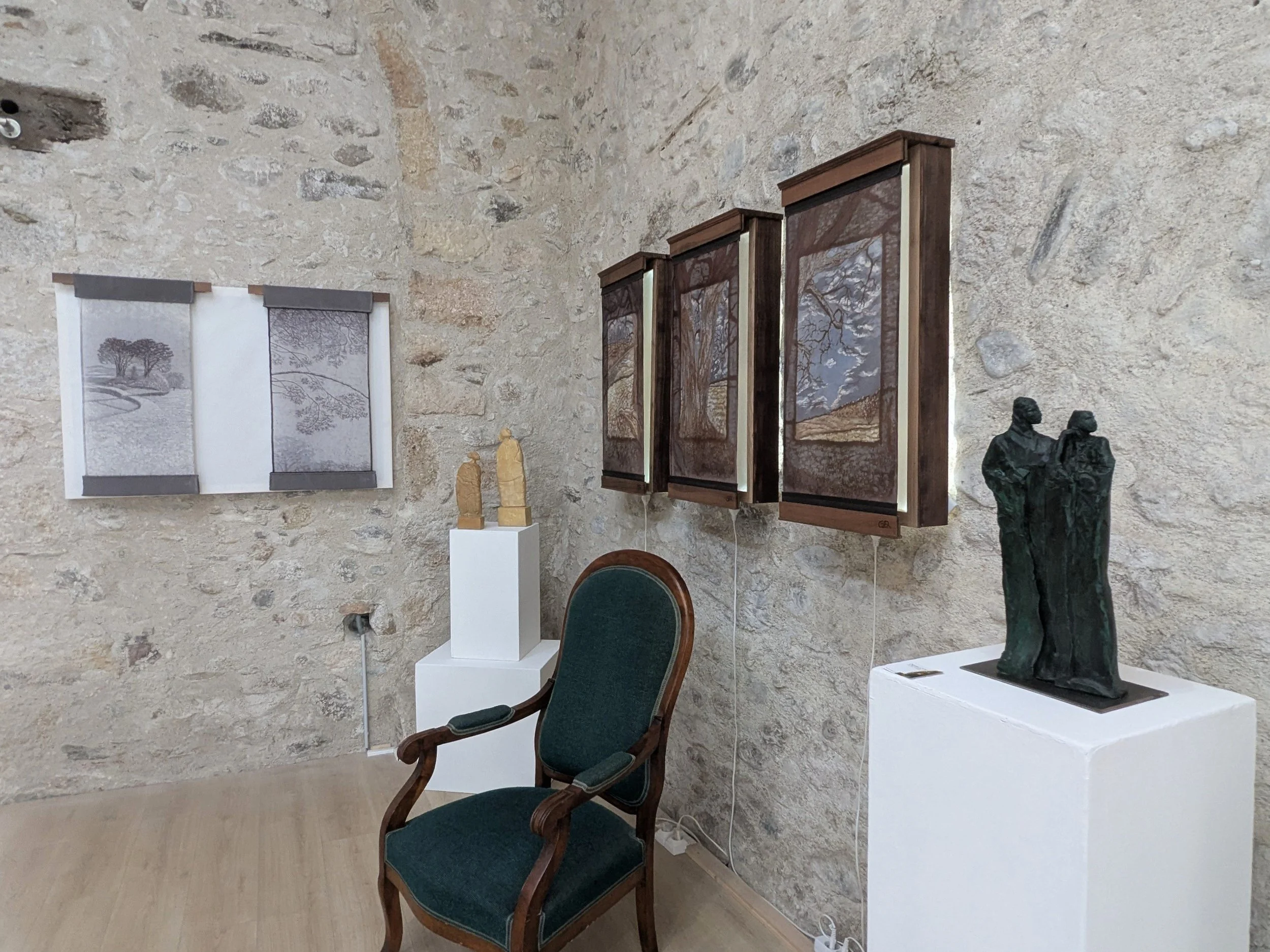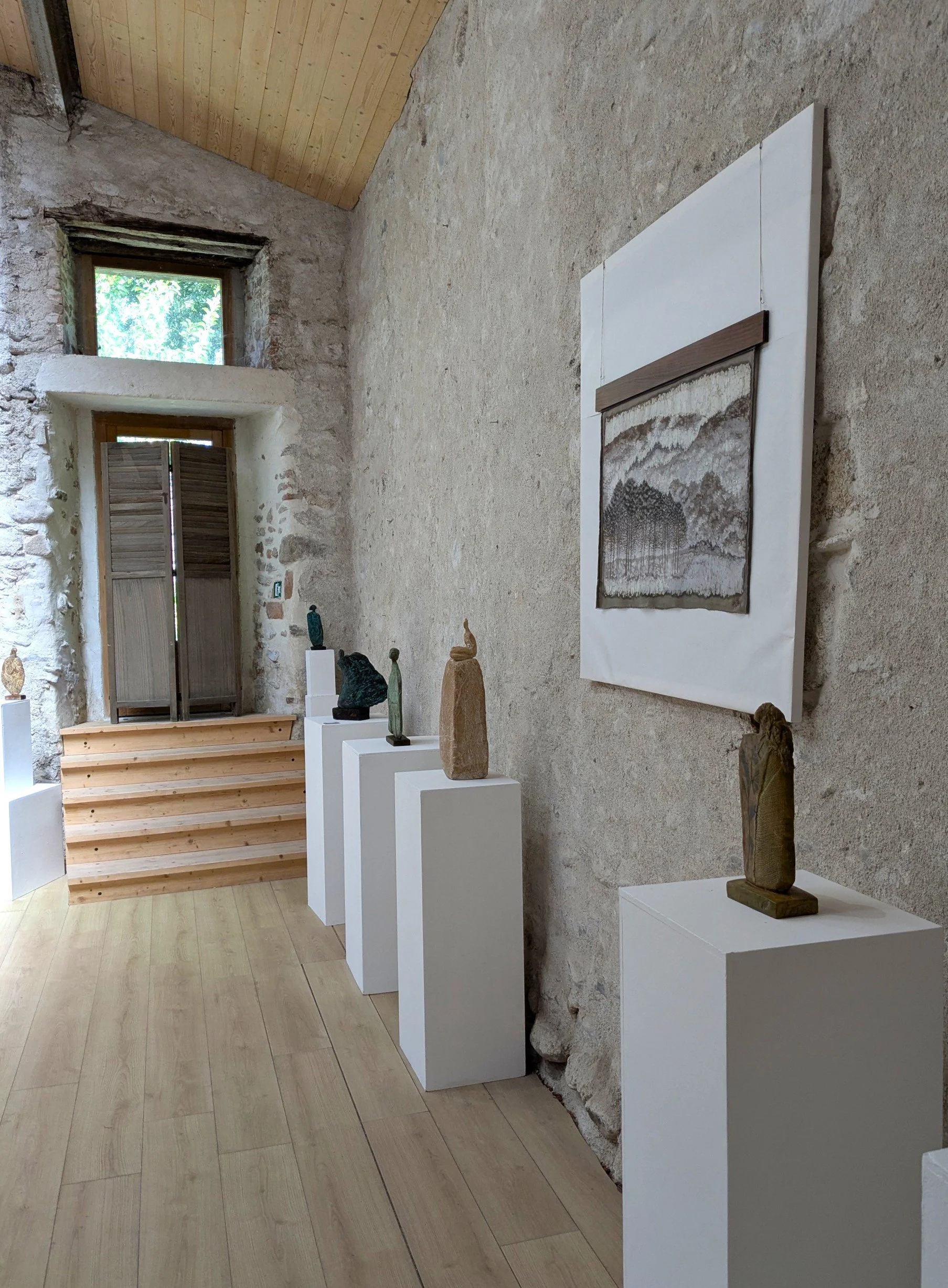
Expositions
Photos d’expos en bas de page / Scroll down to view exhibition photos

L’Invention des Sevenes
Presenting “Les Aïeuls” / “The Elders”
A series of batiks and drawings inspired by ancient chestnut trees standing between life and death

Entre Terre et Ciel
Exposition
Grace Riggan, Batiks sur Soie
and
Agnès Cor, Terres Sculptées

Lumiére et Soie
Batik on silk for me is a love affair with light and color. That is what I wish to share, so I present my work as spatial screens of light, rather than images pinned to a wall. I started doing batiks more than 30 years ago. I had a friend who was working in this medium, and she showed me the basic principles of the technique. I was drawn to the process right away. I was an architect already at the time, and it resonated with what I was enjoying about architectural design. I enjoy the unexpected beauty and order that emerges from a rigorous process. Batik occurs in a layered sequence governed by certain laws of how fabric fibers absorb dye color. There is a play of idea and gesture within a given set of rules about the elements; colors emerge with a structural quality; light is channeled and revealed.
Silk is a noble material. It has been a shaper of human history and aesthetics. The silk filaments are volatile with light and color, and they are steady in holding a pattern – a memory. Pattern is a process of repetition, an incarnated and memorized trace of life force. The wax is also a material with vital patterning. As I paint with the melted wax on the silk, I feel the thrill of participation, of bringing to light a gesture, a color, a line. Knowing that the silk will ineffaceably preserve every gesture could be paralyzing. Sometimes when I have the blank canvas of white silk before me, I feel the heartbreak of doing anything. But then there is the factor of time and layers. If I move through a thought or an idea and another is offered up in its wake it creates a larger pattern, where a single line - be it perceived as a mistake or as a perfect note - is absorbed into a larger energetic entity. I work steadily, with a fascination and a sort of faith in the process.
Woodwork and carpentry were my path away from an architecture that was institutionally isolated from the act of building. I wanted a more intimate encounter with materials, so I apprenticed as a carpenter, and then launched a design-build practice where I general contracted the heavy labor and did the fine craft with my partner and other collaborators. In those years, I gravitated to traditional Japanese woodworking, which taught me about another noble material: wood. I spent years creating translucent, sliding screens, called shoji. I made some of them in hand-crafted purity, following the teachings of a Japanese master, Toshio Odate, who wrote detailed books about the techniques. I also designed and built modern interpretations of shoji, always with a respect and a rigor in the craftsman way.
For me, craft (the way of the artisan) is the humble rigor of practice: every day facing the “Just This”. The moods and thoughts, like the gunas of Hindu cosmology, come and go. The work can continue steadily, serving a larger law that liberates from the burden of individuality. Each day this steady practice with the laws of nature sets the cadence for the melody of the ephemeral, individual pleasures – or displeasures.
Jean d’Ormesson speaks of his craft as a writer as a desire to stop, or to arrest, time. I feel the same desire in my artwork: to capture a moment, to immortalize it. In fact, that also perhaps kills it, but such is the paradoxical pursuit of beauty. I often wish to stop the batik in its progression, to leave it in the innocence and perfection and vivacity of the indeterminate and incomplete. I enjoy the surprises, the barely grasped, and the unknown more than the completed version. But I usually keep going until I feel completion somehow. Even in the completed version I see the journey of each stage of the process – I don’t know if that reads in the piece for others. My observation is that the silk fibers have memory such that nothing is lost. For this show I have prepared a book of photographic batik process stories. I also will be presenting concept sketches alongside the batiks.

En Cévennes
En Cévennes
Pierres et Paysages
The batiks in this series took root in natural cevenole settings, with quiet observation. The places are not grand-scale landscapes, rather they are human-scale places under trees, or carved out by rock walls. For me, that is the essence of the Cevennes. The landscape feels intimate and familiar because it incarnates a gentle humanism that has been endowed by a millennium of pastoral activity. The tranquil pleasure of being in these places is amplified in sketching the details and studying the order in the elements.
Photos of “Entre Terre et Ciel”
St Jean du Gard 2025
Photos of “Lumière et Soie”
Arles 2024








Photos of “En Cévennes”
Lasalle 2023













